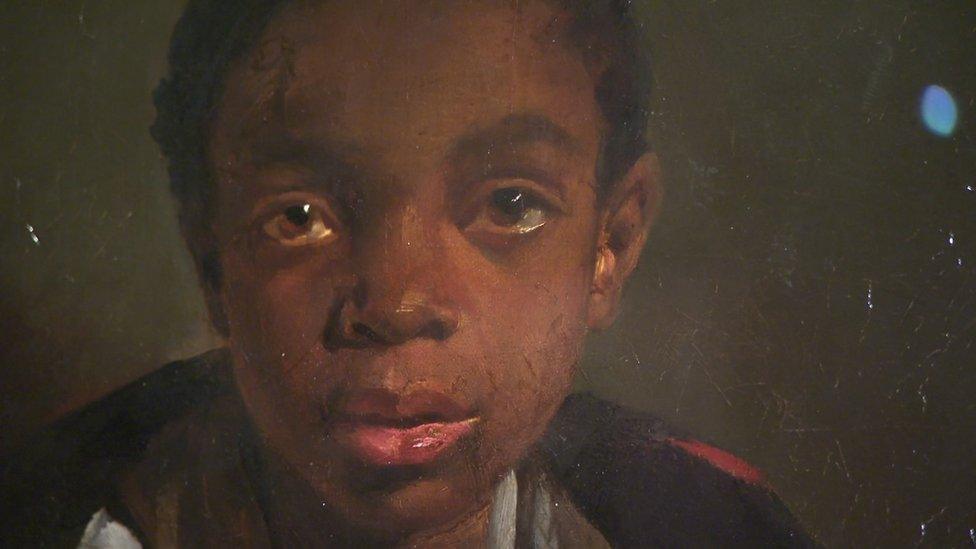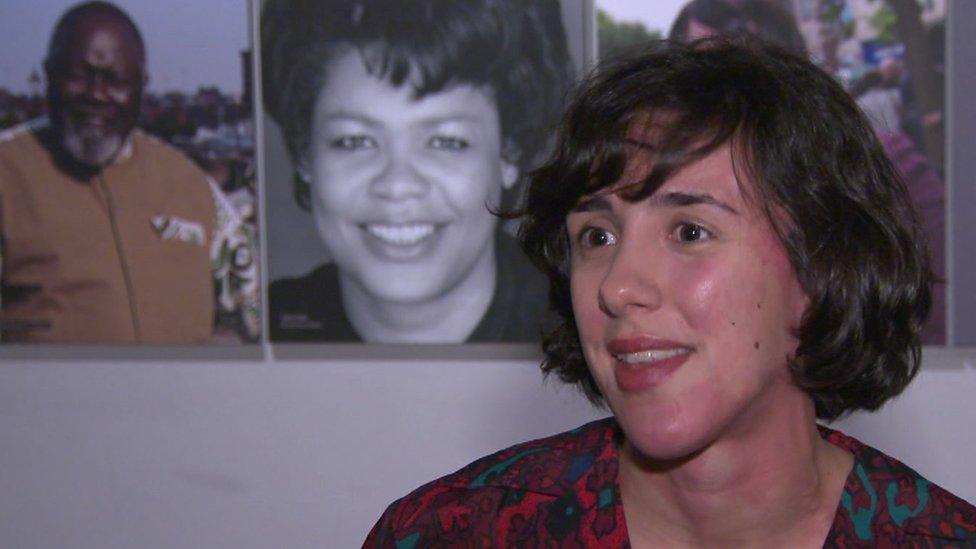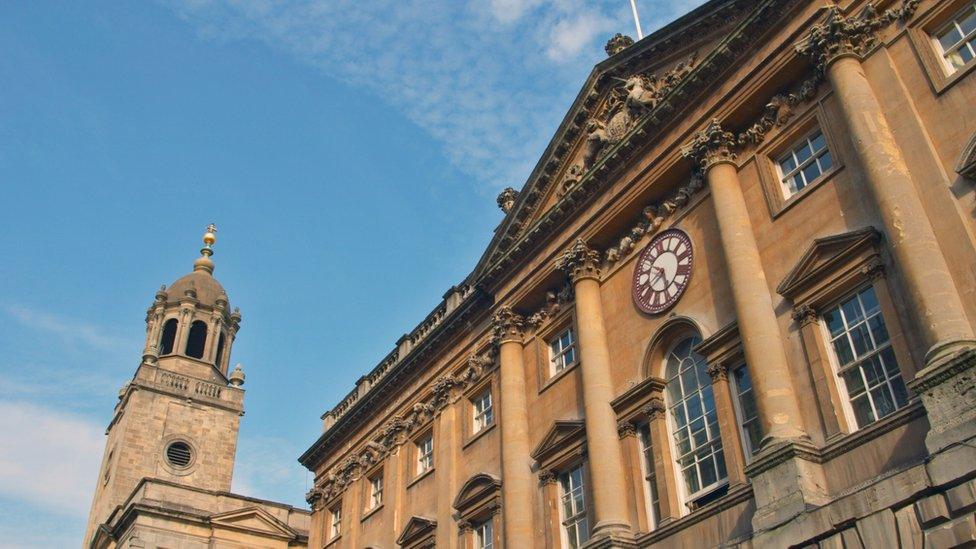'Black Boy' portrait: Appeal for clues in 200-year mystery
- Published

The mystery of the boy's identity has puzzled experts
A museum is appealing for information on the subject of a beguiling Victorian era painting known as The Black Boy.
Painted in 1844, the arresting portrait depicts a black child dressed in torn clothing.
The artist, William Lindsay Windus, lived at the Monument Hotel in central Liverpool at the time, but little is known about the boy.
Experts are hoping to discover his identity nearly 200 years later.
Liverpool's International Slavery museum said the only clues so far came from a listing in a catalogue written in 1891, claiming the boy was a stowaway looking to escape slavery in the United States, who bumped into Windus by the hotel.
The catalogue claimed the artist took pity on the boy and employed him to run errands.
However, according to the listing, a passing sailor spotted the painting in a shop where it had been sent for framing, and realised the child was his missing relative.
The story goes that he was re-united with his parents and travelled abroad, although it is unclear whether the uplifting anecdote is true.
'Justice'
Kate Haselden, who researched the painting for the museum in her role as research fellow for the Understanding British Portraits network, said she believed the boy's story was "integral to the history of Liverpool".
She told BBC North West Tonight: "I think it would be an incredible thing to not only reunite his name with that portrait, but also to give him the justice that he deserves in in being a named subject, which I think would be fantastic."
The painting was passed to a distant relative of Windus, but was then lost for many years.
It was eventually found again in a farmhouse above a fireplace "covered in smoke" by Windus's second cousin.
It remained in the family until it passed to the Walker Art Gallery in 1948, and then to the International Slavery Museum in 2007.
Curators are planning a new display with "interpretive materials" about the painting, delving deeper into Liverpool's black history.

Kate Haselden says the boy's story is "integral to the history of Liverpool"
Ms Haselden said she had been able to track down descendants of Windus, but they did not have any documents hinting at the identity of the boy.
When asked why she was so fascinated by The Black Boy, she said that she walks past it "very often in this museum and it's just such an incredible portrait".
"Everyone has a name and everyone has a story", she said.
"His story doesn't stop when he was painted by this artist, it would be incredible to know where he went after this, what his life became afterwards."

Why not follow BBC Merseyside on Facebook, external, X, external and Instagram, external? You can also send story ideas to northwest.newsonline@bbc.co.uk, external
- Published26 September 2023
